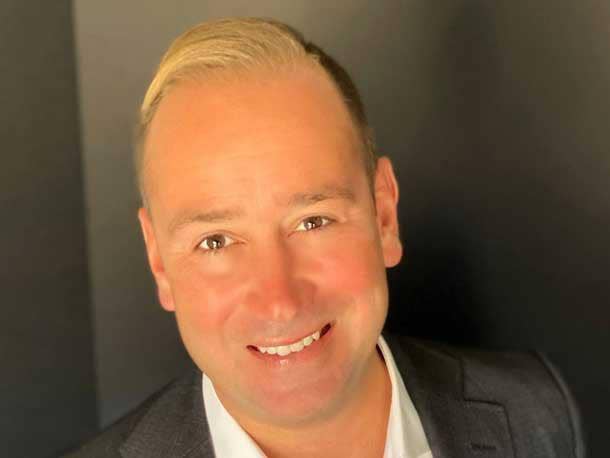CDI CEO Rich Falcone: ‘There’s Obviously No Supply Chain Dynamics When You’re Selling Software’
‘We’re very diversified. We don’t have one vendor that’s more than 20 percent of our business. No. 2, we’ve shifted to a lot of software sales in the last two years. A lot of the companies and the solutions we sell, whether they’re security, backup, networking or even storage, are all software-defined,’ CDI CEO Rich Falcone tells CRN.

Rich Falcone has learned that engaging with customers and selling a solution over a computer screen is as easy as a face-to-face interaction.
“The biggest thing [the pandemic] taught me is that you can do anything you want over a monitor, whether it’s buying and integrating six companies or servicing the most complicated customers in the world,” said Falcone, CEO of New York-based solution provider CDI, No. 61 on CRN’s 2021 Solution Provider 500.
CDI has acquired several companies in the last year or so, most recently Candoris and Clearpath Solutions. Falcone said CDI buys companies for either geographical expansion or technical capabilities.
“I think we’ll continue to grow aggressively both inorganically and organically,” Falcone told CRN. “We‘ve made some great organic hires and invested in new markets like Boston and Florida with organic hiring and growth. It’s not about what you want to do or when you want to do it, it’s all about who you’re going to do it with. We’re not going to just look to expand geographically and plant a flag for the sake of it. If we wanted to do that, we can do it quickly. When we find a company that we feel fits our cultural fabric and our go-to-market thesis, we pursue those companies pretty aggressively.”
From supply chain issues to focusing on attracting and retaining talent to what customers are asking for, here is more from CRN’s exclusive interview with Falcone.

How are you handling the supply chain and talent shortages?
The supply chain is manufacturer-specific. There are certain manufacturers that are having a much harder time than others. And to CDI’s credit, we’re pretty diversified with our manufacturers. I‘ve been on advisory council calls with my competitors, where maybe 60 [percent] to 80 percent of their revenue is coming from one of the manufacturers that is having six months to a year long lead times. Obviously if that’s the case, and you have a lot of eggs in that basket, you’re going to run into working capital issues, cash flow issues. ... You’re going to run into a lot of issues if all of a sudden 75 percent of your business can’t be shipped and you can’t collect cash from your customers.
We’re very diversified. We don’t have one vendor that’s more than 20 percent of our business. No. 2, we’ve shifted to a lot of software sales in the last two years. A lot of the companies and the solutions we sell, whether they’re security, backup, networking or even storage, are all software-defined. There’s obviously no supply chain dynamics when you’re selling software. Between having solid vendor diversity and selling a lot more software than hardware, it honestly hasn’t been an issue for us.
On the talent side, I would say that we view compensation as a complete package and not just a data point, meaning that there’s a lot that goes into that when you’re recruiting top talent. It’s anything from the actual compensation you’re willing to pay them and all of the softer, but yet equally as important, things whether it’s your culture, your work-from-anywhere policy or your vacation policy. We have unlimited PTO and we allow people to work from anywhere. When you start to glue it all together into a holistic package and have a tier-one culture on top of it, we’ve been pretty fortunate to win a lot of the talent recruiting wars. And then you’ve got to be proactive with the people who already work at your business. Nobody likes to ask for money, but understandably they do and should and I think you’ve got to get ahead of it with your top talent.

What is the No. 1 thing customers are asking you for?
Less providers. They want to deal with less people because that‘s what they’re used to. If they go back 10 years, they might have had one integrator doing most of the things that they needed done for them in the data center. [It was] pre-digital revolution, pre-hybrid cloud revolution, so maybe they worked with one or two of our competitors and that entity did most of their work. The problem now is a lot of those entities say ‘no’’ more than they say yes’ when the customer says, ‘Can you help me with this digital initiative? Can you help me with this hybrid cloud initiative? Can you help me with this automation DevOps or modern application initiative?’ A lot of those companies haven’t evolved so the customer is left to deal with newer companies that maybe didn’t exist years ago. When you talk to a lot of the end users, a lot of the feedback we get is, ‘I just have too many consultants working on a singular outcome.’
What do you want to see more of from your vendors?
Sometimes there is inconsistency. As an example, they’ll want us to invest in a sales force to help drive their specific charter in life. Maybe we decide to do that and then we do all the right things and we represent their solution properly. But then sometimes when the rubber meets the road and it’s actually time to work together on the project with the customer, sometimes the field team sings a bit of a different tune than the corporate strategy and you’ve got to call a timeout and re-establish that partnership from the top down. So just consistency from corporate all the way down to the field level with what I’ll call ‘field sales behavior.’ It could be better with certain partners.

What are some of the challenges you’re facing right now and how do you plan on tackling them?
Keeping the talent here and keeping new talent coming. I think it’s probably my No. 1 job and the rest kind of falls into place. That is obviously something that’s top of mind for us and we’re continuously tweaking our offerings whether they be ease of working here, internal education or internal investments. I’m not going to call it a challenge, but I’ll call it a constant focus. I’m happy with the way we’ve handled it, but I think we’ve put a lot of thought into, now that COVID is in its latter phases, what is the work culture look like going forward? If we’re going to have work-from-anywhere and also be allowed to work remote, that’s good in a way. But you don’t not want to have face-to-face opportunity and face-to-face interaction, which many people understandably crave. For example, we’ve done a few things where we have on the first Thursday of every month ‘Throwback Thursday.’ If you want to come into the office one day a month maybe that’s a day you should come because everybody else is going to come in that same day. It’s strategizing about which days large groups of people want to come in, they can see each other and not just come in and be the only person there. We just did a company event, the first time ever, where we had the entire organization together for two days face-to-face with multiple breakout rooms. That obviously wasn’t a cheap event to host but it was worth its weight in gold from a culture perspective. So I think just finding the balance between remote and in-person and maintaining culture is something that every organization needs to really think through based on their dynamics and how they’re set up.

Speaking of a hybrid approach, when it comes to customers having that model, how did that impact your business?
It actually made it a lot easier to do our business. Pre-COVID I think CDI would have tried to balance our technical resource pool. As an example, the presales team, we would have probably tried to have an even number of each skill set in each market. So a set number of networking, a set number of DevOps, a set number of cloud, a set number of digital resources in each market because the logic is the customers are there and each customer needs to have that coverage model so we can service that market accordingly. Since our customers are now all over the place, they work from home, they live in different states than they used to, they live 2,000 miles away from us, we don’t really need to do that anymore. We don’t try to balance regions by resource skill. It’s a global resource model both pre- and post-sales. With customers working from anywhere and working from different places, that’s really enabled that. That would have been a difficult model to do before this transition because I think the customers would have said, ‘Hey, look, I want someone in person. I want my software-defined networking engineer right in front of me for the sales call.’ Now that person is probably home or living in some other state than they used to, so the customers going to this model has made servicing our customers easier because we don’t have to adhere to physicality or originality anymore.
What is the biggest thing that the pandemic has taught you about the tech industry?
As a sales rep for a long time if you would have asked me, ‘Can we sell complicated, high-end modern solutions remotely over video?’ Objectively, I would have told you no, pre-COVID. I would have instinctively reacted that you need to be in front of your customer. That’s how I was wired and how I was raised, and it’s just not true. You just don’t need to do that. It’s a lot of wasted resources and cycle time. The biggest thing it taught me is that you can do anything you want over a monitor, whether it’s buying and integrating six companies or servicing the most complicated customers in the world.

Where do you expect to see the most revenue growth?
I think you’re going to continue to see digital and managed services accelerate growth for CDI. The hybrid-digital transition that customers are making presents a tremendous service opportunity for both professional and managed services. If you look at our numbers, the way our professional and managed services teams are growing, they’re going to continue to outpace a normal growth rate.
What makes CDI better than the competition?
Culture. I know it’s a common answer, but it’s not commonly executed. We’re a very high-energy, high-performance-driven, loyal, friendly, supportive group of people. It’s an infectious reality and we hear it a lot, even from the companies we’ve acquired who also had great cultures. The unification of those cultures has just created, I don’t want to sound like [musician] Bret Michaels, but ‘nothing but a good time.’ You want to hang out with people that are fun and that challenge you personally and professionally. We have a very low attrition rate, much lower than the industry average. The data speaks for itself. I would say if your bookings are high and your attrition rate is low, you’re doing something right.